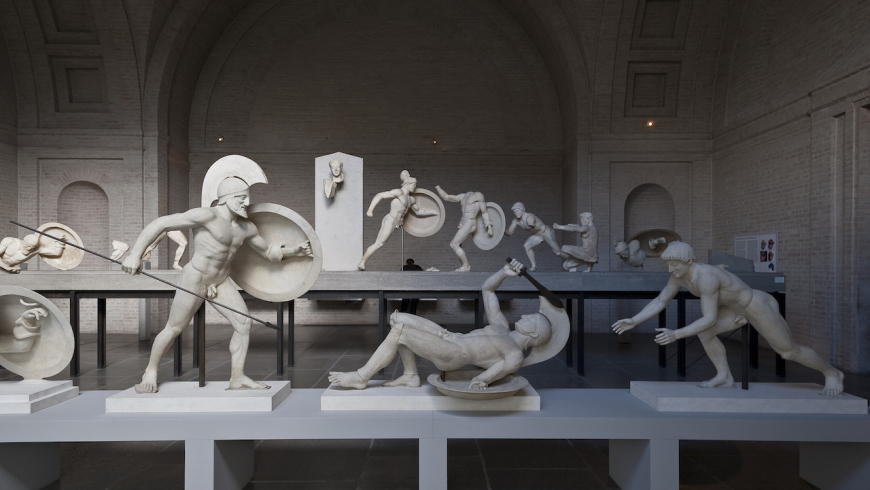The Glyptothek in Munich is a neoclassical building that was built in Ionic style, starting from 1815, at the behest of the Crown Prince of the Wittelsbach dynasty (who was to become King Ludwig 1st, king of Bavaria) by the architect Leo von Klenze in the square that he was setting up and that then was to be called Königsplatz.
In the various sections of the museum sculptures, reliefs and mosaics are preserved dating from the Greek Archaic period (650 BC) to the late Roman Empire (400 AD).
Among the most important works there are the figures from the Temple of Athena Aphaia (east and west gables) to Aegina (capital of the homonymous island, not far away – 50 km – from Athens) that date back to 500 BC and that were removed in 1811, by Charles Robert Cockerell and Otto Magnus von Stackelberg and sold to the Crown Prince. They were restored and reconstructed by the famous Danish neoclassical sculptor, Bertel Thorvaldsen
Both gables show in the center the goddess Athena and include groups of warriors, some fallen, with their weapons.
Pride of the Glyptothek is also the so-called Fauno Barberini, or drunken Satyr, Greek sculpture that dates back to around 220 BC that was found in Rome, in 1624, in the ditches of Castel Sant’Angelo and four years later entered the collection of Cardinal Francesco Barberini. Restored by Gian Lorenzo Bernini it was acquired by the Prince Wittelsbach in 1814. Antonio Canova fought a battle so that the work remained in Rome and obtained an export ban that took effect but only for five years. On the 6th January 1820 the statue arrived in Munich, where it was exposed in the Chamber that still hosts it.
Other works of primary importance are the bas-reliefs of the Altar of Domitius Ahenobarbus that came from the temple of Mars in Rome, attributed, because of the style of the gown and uniforms of the soldiers, to a period just prior to the Mario’s reform of the army ( ca. 107 BC.).
